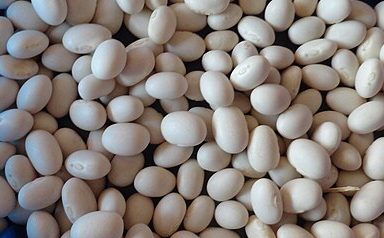India has raised farmers’ prices of soy to a minimum support price (MSP) of 4,892 rupees ($58.26) a quintal (100 kg) in three states.
The first set of states to receive this increment were Karnataka in the southwest and Maharashtra in the west of the country.
But it was the September 11, 2024 MSP approval in oilseed leader Madhya Pradesh (MP) in central India that bodes much significance.
Soybean farmers here however want it to rise to 6,000 rupees ($71.46) per 100 kg to improve their income.
Their representatives say that they will continue to ask for this target to procure a decent income for Madhya Pradesh’s oilseed growers.
Meanwhile, they have accepted the Union government’s minimum offer, which will make purchases via the state’s sub-government. Before the minimum raise, the locals had feared that traders could exploit them at a below-par rate.
Wholesale Prices of Soy in Mandis
Indeed, most wholesale prices of soy in India have been hovering between 4,000 and 4,500 rupees ($47.64-53.55) per 100 kg.
There were exceptional mandis (government wholesale markets), however, with double that price. On September 11, 2024, mandis in Tamil Nadu offered soybeans at between 8,000 and 9,000 rupees ($95.20-107.10) a quintal.
Most farmers bring their produce to mandis, which offer subsidized rates through minimum price protection.
Soyabean pricing in India is sensitive and often pits farmers against the aptly named Agriculture and Farmers’ Welfare ministry. This is why the agriculture minister Shivraj Singh Chouhan swiftly intervened by raising the price in MP following the farmers’ outcry.
In a word, the increment in farm-gate prices of soy in three states in India buffers against poor market rates. To learn more about the important soybean (Glycine max) crop and its products in India, below are a few statistics.
India Soybean and Soybean Oil Statistics
By production volume, India’s soybean and soybean oil output are among the highest globally. In 2021, the country produced 12,610,300 tonnes of soybeans from 12,918,280 hectares, per FAOSTAT data. The 2022 output increased to 12,986,720 tonnes, even as acreage dipped to 12,146,580 hectares. By 2023, India was ranking 5th in worldwide production of soybeans at 11,000,000 tonnes, behind Brazil’s world-beating 156,000,000 tonnes.
In its part, India’s soybean oil amounted to 1,317,200 tonnes in 2021, according to the Food and Agriculture Organization (FAO). The 2023 estimate was at 1,730,000 tonnes, the 6th highest production volume worldwide, but far below China’s 17,034,000 tonnes. Despite this impressive processing, the commodity is always in high demand in India and the country frequently resorts to imports.
Is India a major soybean and soybean oil exporter?
While India consumes most of its soybean oil, it is still a major exporter. In 2021, it ranked 42nd worldwide in outbound shipments worth $31 million, 1/3rd of which at $9.59 million bound for Bhutan.
Does India import soybean oil?
India ranked 1st globally in 2021 for soybean oil imports worth $6.49 billion, according to OEC. Key origins of this vegetable oil in 2021 included Brazil at $1.58 billion and the U.S. at $121 million.
How high is soybean oil consumption in India?
2023 estimates show that people in India consumed 4,935,000 tonnes of soya oil. This was the 4th highest consumption level worldwide behind that of China, the U.S. and Brazil in descending order.
Where are soybeans cultivated in India and for what purpose?
Maharashtra and Madhya Pradesh (MP) led soy production in the 2021-22 year at 5.47% and 5.39% national share respectively. According to the government of India, MP led the total soy area at 44.94% while Maharashtra claimed 39.19%. The main purposes of soybean production in India is making human food including soybean oil and soymeal for animal feed.
